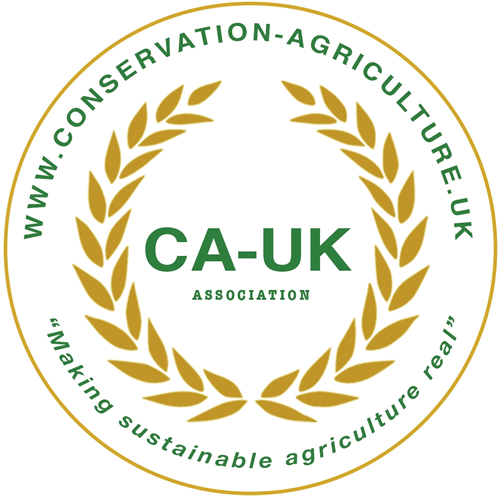
Environmental Benefits
The implementation of Conservation Agriculture techniques entails the achievement of many benefits for the environment. Some of them are as follows:
Improvement of soil properties:
Soils improve considerably over time when CA techniques are put into practice because not disturbing the soil favours the proliferation of microorganisms and meso-fauna that:
promotes infiltration due to the galleries and networks of biopores that are formed when they move and live within the soil (e.g. earthworms, centipedes/millipedes, ants, beetles). By their decomposition and the decay of crop biomass and mulch, and through the incorporation of organic matter into the soil, especially by earthworms, there is an increase in the level of soil organic matter as well as in aggregate stability, causing a better structuring of soils.
Increase of biodiversity:
Obviously, life of any organism that lives in the soil is affected by the performance of mechanical operations on it. The diminution or elimination of tillage will produce, therefore, growth in populations of soil microorganisms and meso-fauna both in number of species and individuals of each species. Similarly, populations ground nesting birds such as starling, lapwing and wagtail, and burrowing insects, as well as wildlife increase on farms practicing Conservation Agriculture as food webs and food chains are established over time due to no or little soil disturbance, availability of organic substrate, and greater crop biodiversity. Overall, agrobiodiversity is greater in Conservation Agriculture fields and there is greater resilience against insect pests and pathogens due to greater abundance of natural enemies of pests.
Less runoff and erosion:
Keeping soils covered and protected minimizes erosion because soil cover avoids or reduces the direct impact of raindrops on the ground surface and its energy load is dissipated without breaking up the soil aggregates and sealing the soil surface. This open structure allows water to infiltrate more readily through the surface into the well-structured soil, causing a reduction in surface runoff and soil erosion. Also, a healthy well-structured soil behaves like ‘sponge’ and can retain a maximum amount of water while facilitating through flow drainage of excess water through the network of biopores. Vegetation or biomass cover also acts as a physical barrier and slows water movement downslope. Thus, decrease I runoff and erosion means that there is much reduced risk of movement of agrochemicals in surface water.
Less contamination of downstream water:
The lower soil erosion and reduced runoff in Conservation Agriculture minimizes the amount of water, microorganisms, soil particles and agrochemicals attached to soil or diluted in water reaching streams that are located downstream, and eventually into rivers, estuaries and water bodies.
Less floods and landslides:
Conservation Agriculture makes it more unlikely the occurrence of floods and/or landslides because the soil particles are more united and formed into stable micro and macro aggregates, thus running less risk of becoming eroded. At the same time, roots of plants in undisturbed soil hold on to the soil and hold the soil together, imparting increased stability to land. Further, as stated above, surface runoff diminishes which also reduces the risk of floods and landslides.
Less GHG emissions:
Not tilling the soil avoids the reaction between soil carbon and atmospheric oxygen, resulting in reduced CO2 emissions. Furthermore, using less fossil fuel also implies a decrease in the CO2 emissions. Similarly, because improved soil drainage and the decrease in the use of mineral nitrogen fertilizer, there is a reduction in methane and N2O emissions.
Increase of the CO2 sink effect of the soil:
Plants and soils act as carbon sinks. The implementation of Conservationist Agriculture leads to increase in return of crop residue to the soil so that much of the CO2 fixed into plants tissues does not go back into the atmosphere, thus becoming part of soil and increasing the soil organic matter levels. Along with the decrease in soil disturbance, there is an increase in soil organic matter referred to as carbon sequestration.

